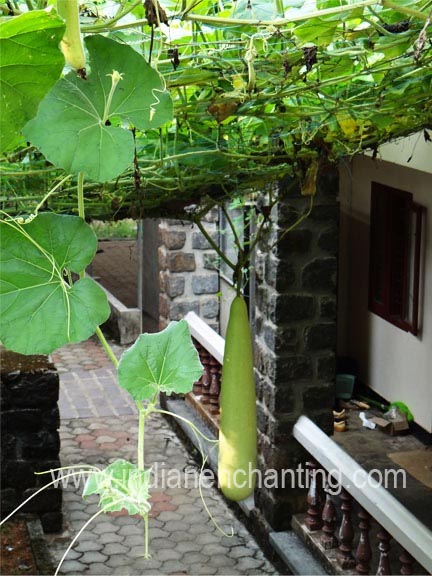
Churakka ചുരക്ക
Genus: Lagenaria
Botanical name: Lagenaria siceraria
PLANT NAME IN DIFFERENT LANGUAGES
Sanskrit: Katu-tumbi, Tumbini, Ikshavaaku. Tiktaalaabu, Pindaphalaa.
English: Bottle gourd, Opo squash or Long melon
Hindi: Ghiya
Malayalam: Churakka, Kaipan chura, Kattuchura, Pechura
MEDICINAL PROPERTIES
The bottle gourd is a vigorous, annual, running or climbing vine with large leaves and a lush appearance. It grows fast and may begin to flower only 2 months after seeding. The vine is branched and climbs by means of tendrils along the stem. The foliage is covered with soft hairs and has a foul musky odor when crushed. The leaves of the bottle gourd are up to 15 inches wide, circular in overall shape, with smooth margins, a few broad lobes, or with undulate margins. Leaves have a velvety texture because of the fine hairs, especially on the undersurface. The bottle gourd flowers are borne singly on the axils of the leaves, the males on long peduncles and the females on short peduncles. The flowers are white and attractive, up to 4 inches in diameter, with spreading petals.
The whole plant of churakka is used for eprosy, skin diseases, jaundice, dental caries and headache.
